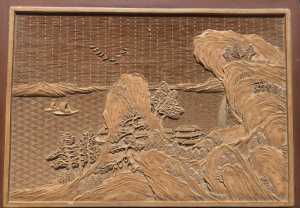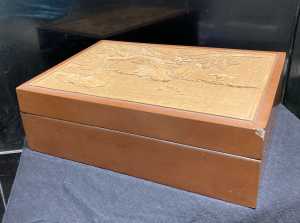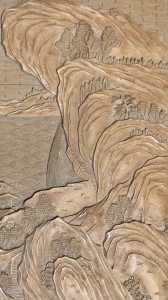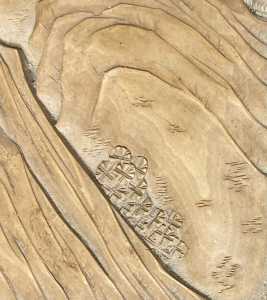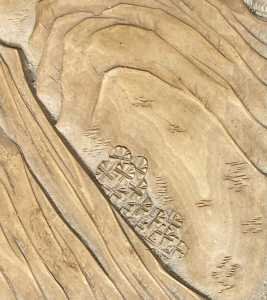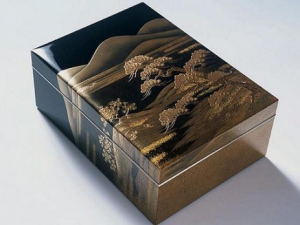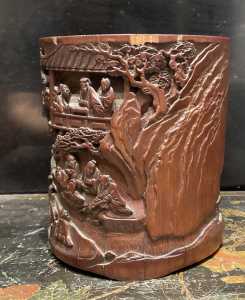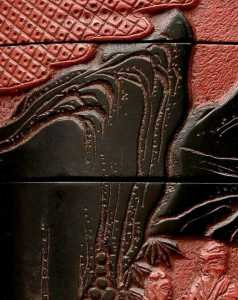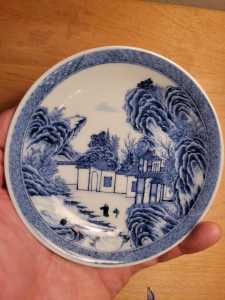The Chinese and Asian Art Forum. For Fans, Collectors and Dealers.
 Basic Rules For the BidAmount Asian Art Forum: Talk about whatever you want. You can even discuss and offer things that are for sale if they are authentic. Maximum image file size per post is 2 MB. Images of 700pxl x 700pxl are optimal if saved at a medium resolution. Be respectful of others and enjoy yourself. Click the YouTube link for a brief tutorial on using the forum. You can also EMBED Videos by cutting and pasting from You-Tube, Vimeo etc.
Basic Rules For the BidAmount Asian Art Forum: Talk about whatever you want. You can even discuss and offer things that are for sale if they are authentic. Maximum image file size per post is 2 MB. Images of 700pxl x 700pxl are optimal if saved at a medium resolution. Be respectful of others and enjoy yourself. Click the YouTube link for a brief tutorial on using the forum. You can also EMBED Videos by cutting and pasting from You-Tube, Vimeo etc.
NOTE: To post an item or add a new post, click open the category title from the FORUM LIST, and CLICK the Blue ADD TOPIC button.
I sent some pics to Peter for his opinion (my first time doing that!) on this Chinese brown lacquer box with inset yellow (ochre) cinnabar lacquer panel. I picked it up while poking around my local thrift-antique malls in the area - My lunch cost me more than the box!
If anyone has some thoughts to share on the age, I'm all ears.
What I can say is that the piece is no later than 18th c., but perhaps as early as 16th c.
I've owned one nice Ming cinnabar before, as well as a few Qianlong pieces... but all were the traditional red cinnabar, and designs that are well known in the collector's world. Yellow, or ochre, is very rare and you generally only see it in combination with red or black cinnabar.
Additionally, this landscape scene doesn't have any people in it...very unusual.
Sotheby's offered a 16th c. carved red cinnabar box back in 2015 with an estimate of $20,000-30,000, but it doesn't show a sold price (perhaps unsold). I wonder if they dated it correctly.
https://www.sothebys.com/en/auctions/ecatalogue/2015/chinese-works-of-art-n09317/lot.226.html
The carved panel is of good size for cinnabar, 10" x 7", so I suspect the box was used for stationary for a high level dignitary... perhaps even imperial.
Anyway...I was too excited to keep it to myself... hope you all enjoy seeing it.
Tim
Very pretty! For some reason it feels Japanese to me in certain ways. I'm curious to know once you learn more. Let us know what Peter says!
@johnshoe I know what you mean - but there's a trick you should know, because the value of Japanese cinnabar (which is pretty much all from the Meiji onward) is so much lower than Chinese.
Japanese cinnabar often mimics Chinese Ming cinnabar, but the Japanese make a thick single layer cast of lacquer, then carve. The Chinese make multiple layers - Yuan-Ming might have 50-200 very thin layers, early to mid Qing 20-100 thin layers, and late Qing to modern 1-20 layers (very visible).
Look at this photo (I posted it earlier, too)...
Do you see the rings? It's almost like wood. What you are looking at is the gentle slope of the carved mountain that shows the thin layers of lacquer as the carving goes deeper.
It's incredible to think about. Each layer is only 1/10th of a milimeter... maybe thinner.
@greeno107 so interesting. I was also going to say how wood-like this looks. Is there such a thing as Chinese lacquer made for the Japanese market, and what kind of wood do you think the box is made of? Can we see the inside?
@greeno107 it looks like wood grain to me. I need to experience some more lacquer up close to learn about it because I know next to nothing.
@johnshoe The connection with Japanese taste is not coincidental - the Japanese have always loved Chinese lacquer!
The finest examples of Yuan and Ming lacquer exist because the Chinese gifted Japanese ambassadors and Buddhist temples in Japan with gifts of cinnabar. Quite literally, even small dishes about 4" wide are worth millions of USD. These items are considered national treasures.
So, it was not made specifically to appeal to the Japanese taste, but rather that Japanese found the esthetics suited their tastes. Does that make sense?
@greeno107 Yes, I see. But does your box, in construction terms, seem Japanese in style to you? Have you found other examples where only the top panel was carved like this? It has a sleakness and simplicity (I don't mean it is simple, just that it is neatly and cleanly designed) that seems more Japanese than Chinese.
@johnshoe Interesting question. If I understand you correctly, have I found Japanese lacquer boxes with insets of cinnabar on the top? No.
Jade, hardstone, porcelain... but no cinnabar in neither Japanese or Chinese.
The construction of the actual box is hard to catagorize as being Japanese or Chinese in style. They both used the same black lacquer and a box shape is a box shape.
I do have quite a lot of Japanese lacquer. Other than modern pieces, I think it would be rare for the Japanese to make a solid black lacquer box without any gold decor (maki-e) - that's what the Japanese are famous for.
There is a chip on the corner of the box in the brown lacquer, and a I can see a layer of clay between the brown lacquer and the wood core - that's a Chinese method. On my Japanese boxes, the black lacquer is applied directly to the wood core.
I think I've solved my own question regarding age...and I think it explains the unusual carving.
Littleton and Hennessy are lacquer experts and they put out this catalog some years back on lacquer:
http://www.littletonandhennessy.com/wp-content/uploads/2010/03/chinese-lacquer.pdf
Anyway, I re-read it tonight and what I learned is that by the Qianlong, most of the knowledge on carving/making cinnabar had been lost. So, Emperor Qianlong ordered bamboo carvers to make pieces.
Wouldn't you say the rocky mountains look a lot like those on my bamboo brushpots?
Christie's says it's 17th to 18th c.... I don't know for certain.
@greeno107 Here is an amazing Imperial Qianlong lacquer panel I got to see in person a year or so back. Just thought you would enjoy seeing it.
https://www.albanyinstitute.org/details/items/lacquer-panel.html
@johnshoe That's an amazing wall panel (screen). Embelishments with jade on the frame was the rage during the Qianlong.
I have seen larger table sized cinnabar screens that have landscapes of jagged mountains - they are quite amazing looking, but the detail is not quite as fine as that of my much smaller box panel - in photos it is hard to differenciate the quality because you loos perspective of size.
I found on Liveauctioneers.com this very finely carved 19th c. Chinese cinnabar box that was carved in the Ming style - sold for about $5,500 including premium earlier in 2022.
I put a photo of the cover side by side by my panel which is slightly smaller (12"x9" vs. 10"x7")
The 19th c. box is really well made...beautiful. But, side by side, you can see the differences in the fineness of the carving....keep in mind that my cover is actually 2" smaller on each dimension even though I kept the images of simiilar size.
#greeno,
It's a very nice box you procured.
Mark
Thanks for visiting "The BidAmount Asian Art Forum | Chinese Art"
If you sell on eBay, or have a shop feel free to post images and descriptions and links.
Check back often for discussion about the latest news in the Chinese art and antique world. Also find out about the latest Asian art auctions at Sotheby's, Christie's, Bonhams and Tajans.
Auction results for: fine porcelain, ceramics, bronze, jade, textiles and scholar's objects. As well as Japanese, Thai, Vietnamese and other Asian cultures.
Thank you,
Peter Combs
Topics and categories on The BidAmount Asian Art Forum | Chinese Art
Kangxi vases, Kangxi dishes and chargers, Kangxi ritual pieces, Kangxi scholar's objects, Qianlong famille rose, Qianlong enamels, Qianlong period paintings, Qianlong Emporer's court, Fine porcelain of the Yongzheng period. Chinese imperial art, Ming porcelain including Jiajing, Wanli, Xuande, Chenghua as well as Ming jades and bronzes.
The BidAmount Asian Art Forum | Chinese Art
A free Asian art discussion board and Asian art message board for dealers and collectors of art and antiques from China, Japan, Korea, Thailand, Cambodia, Vietnam and the rest of Asia. Linked to all of the BidAmount Asian art reference areas, with videos from plcombs Asian Art and Bidamount on YouTube. Sign up also for the weekly BidAmount newsletter and catalogs of active eBay listing of Chinese porcelain, bronze, jades, robes, and paintings.
The art of calligraphy - and for the ancient Chinese it certainly was an art - aimed to demonstrate superior control and skill using brush and ink. Calligraphy established itself as one of the major Chinese art forms during the Han dynasty (206 BCE - 220 CE), and for two millennia after, all educated men were expected to be proficient at it.
The Museum’s collections of Asian art span nearly five millennia and encompass the cultures of China, the Himalayas, India, Japan, Korea, and Southeast Asia. In 2007, the Museum launched an initiative to create dedicated galleries for the collection, beginning with a gallery for the arts of Korea ...
Chinese art is full of symbolism, in that artists typically seek to depict some aspect of a totality of which they are intuitively aware.
China Online Museum is the finest online museum of Chinese art. It features Chinese calligraphy, painting, ceramics, bronzes, carving, and other artworks.
Chinese Ceramics & Works of Art. Overview Upcoming auctions Contacts Auction results ... Christie’s sales of Chinese ceramics and works of art showcase centuries of Chinese history. Held throughout the year in London, New York, Paris and Hong Kong, they attract a wide audience of collectors and connoisseurs vying for pieces as diverse as ...
Explore Asian Art Week. Contact the Specialist Department. Chinese Paintings ... Senior Specialist, Head of Sale. [email protected]. Tel:+1 212 641 5760. Bid in-person or online for the upcoming auction:Fine Chinese Paintings on 10 September 2019 at New York. Bid in-person or online for the upcoming auction:Fine Chinese Paintings on 10 ...
Discover an abundance of must-see art from all corners of a vast continent at Christie’s NY Asian Art Week. From contemporary classical and Chinese paintings to works with exemplary provenance from the Art Institute of Chicago, our Rockefeller Paza galleries will be full of ancient treasures and contemporary masterworks in a salute to the vibrant arts of Asia.
Sold to benefit The Art Institute of Chicago’s Asian Art Acquisition Fund, the sale features 84 lots with a focus on Ming and Qing porcelains, and offers a rare insight into the taste for collecting Chinese ceramics and works of art in the Midwest from the end of the 19th century through the 1980s. Highlights include two Wanli wucai garlic-head vases, a Qianlong mark and period, blue and ...
Specialist, Chinese Paintings, Christie's London Dr Malcolm McNeill is a Specialist in Chinese Paintings at Christie’s, based in London. He previously worked as an assistant curator of the Chinese collections and the Victoria and Albert Museum in London, as a researcher at the British Museum, and as a translator and tour guide at the National Palace Museum in Taipei.
The Christie's Education 2020 Conference: The Chinese Art Market 18 Jun 2019 Christie’s Education is delighted to announce our first international academic conference in Asia which will take place in Hong Kong from 26-27 November 2020 at the Hong Kong Convention and Exhibition Centre and will run in parallel with Christie’s Hong Kong Autumn Auctions.
The summer Chinese Art sale in Hong Kong will feature works of art from several private collections, including Qing porcelains and textile from the collection of the legendary Chinese art dealer A. W. Bahr (1877–1959), fine gilt bronze Buddhist sculptures from an old Hong Kong collection, an East Asian collection of Qing dynasty wine cups and jades, and a Japanese collection of Song ceramics ...
Sotheby's Chinese Works of Art Department holds two auctions each year in London, New York, Hong Kong and Paris.
Chinese Art - View Auction details, bid, buy and collect the various artworks at Sothebys Art Auction House.
With more than 340 Chinese works of art dating from the Neolithic to the Republic periods, highlights of this sale include a selection of Qing Imperial monochromes from the collection of Arnold and Blema Steinberg, early ceramics from the Art Institute of Chicago and Chinese porcelain and works of art from the collection of Henry Arnhold.
Results: Sotheby's Asia Week achieved $52.4 million in six strong auctions, exceeding pre-sale estimates. With 76.5% of lots sold and 60.3% of lots surpassing high estimates, the Asian art sales at Sotheby's indicate continued collector interest in the finest works of art from China, India and and the Himalayas.
Today's sale of Important Chinese Art will proceed as planned with sessions at 10 AM and 2 PM EDT. Sotheby's will be monitoring the weather conditions throughout the day and will be available to coordinate alternative bidding options should conditions make it difficult for clients to attend the auction in person.
Bonhams Chinese Art department is renowned for offering the finest works of art representing the richness and breadth of China's artistic heritage, particularly Imperial porcelain, white and spinach green jades, cloisonné and Buddhist art. Specialised international auctions are held globally, including London, Hong Kong and San Francisco.
Bonhams : Chinese Works of Art We use cookies to remember choices you make on functionality and personal features to enhance your experience to our site. By continuing to use our site you consent to the use of cookies. Please refer to our privacy and cookie policies for more information.
Bonhams Fine Art Auctioneers & Valuers: auctioneers of art, pictures, collectables and motor cars. We use cookies to remember choices you make on functionality and personal features to enhance your experience to our site. By continuing to use our site you consent to the use of cookies. ... Chinese Art (US) General enquiries
Bonhams : Fine Chinese Art We use cookies to remember choices you make on functionality and personal features to enhance your experience to our site. By continuing to use our site you consent to the use of cookies. Please refer to our privacy and cookie policies for more information.
Bonhams Fine Art Auctioneers & Valuers: auctioneers of art, pictures, collectables and motor cars Bonhams : Asian Art We use cookies to remember choices you make on functionality and personal features to enhance your experience to our site.
Bonhams are international auctioneers of fine Chinese and Japanese art. We specialise in rare Imperial and Export Chinese ceramics and works of art, as well as Japanese ceramics, fine and decorative works of art from the Neolithic Period to the 20th century. View on map
Bonhams Fine Art Auctioneers & Valuers: auctioneers of art, pictures, collectables and motor cars. We use cookies to remember choices you make on functionality and personal features to enhance your experience to our site. By continuing to use our site you consent to the use of cookies. ... Asian Art Bonhams. Work. 22 Queen St.
